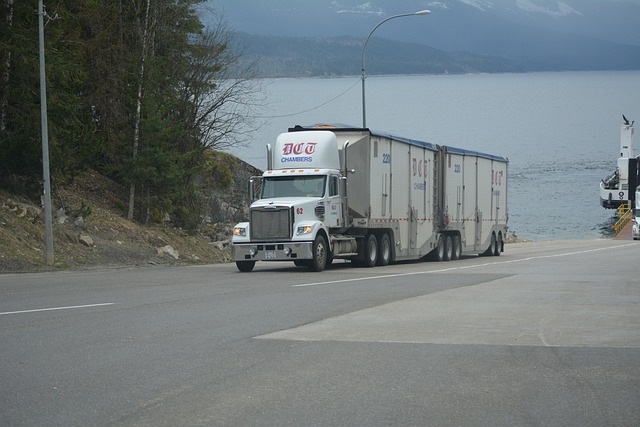Looking to register your car in California? This comprehensive guide will walk you through the process, ensuring a smooth experience. From understanding the essential requirements for car registration in California to navigating the step-by-step DMV VIN verification process, you’ll find all the necessary information here. Learn how to prepare the right documents, anticipate and resolve common issues, and take crucial post-registration steps.
- Understand the Requirements for Car Registration in California
- Gather Necessary Documents for DMV Vin Verification
- The Step-by-Step Process of Registering Your Vehicle
- Common Issues and How to Resolve Them During VIN Verification
- Post-Registration: Important Steps to Take After Car Registration
Understand the Requirements for Car Registration in California

Before registering your car in California, it’s crucial to understand the requirements set by the Department of Motor Vehicles (DMV). One key step is ensuring your vehicle meets all safety and emission standards. This includes a thorough inspection that verifies the Vehicle Identification Number (VIN) and checks for any outstanding issues or recalls. The DMV recommends completing this process, often referred to as VIN verification, promptly after purchasing a car.
Additionally, you’ll need to provide essential documents such as proof of insurance, identification, and ownership. If you’re dealing with a private sale or transferring a title, specific forms may be required. For convenience, many individuals opt for mobile VIN inspection services that bring the verification process directly to them. These mobile vin verifiers can simplify the registration process by streamlining the initial checks, making it easier to navigate the California car registration requirements.
Gather Necessary Documents for DMV Vin Verification

Before heading to the California Department of Motor Vehicles (DMV), ensure you have all the required documents for a successful dmv vin verification. This process is crucial for registering your vehicle, especially if you’re buying a used car. Gather the title or registration certificate of the vehicle, along with any existing warranty information. Additionally, you’ll need proof of insurance and identification, such as a driver’s license or state-issued ID card.
For convenience, many opt for mobile vin inspection services, which can be particularly useful if you’re pressed for time. These services send a professional to your location for a vin inspection, ensuring all documents are in order before visiting the DMV. This approach streamlines the process, saving you a trip and potential delays.
The Step-by-Step Process of Registering Your Vehicle

Registering a car in California involves a straightforward yet precise process. It begins with gathering all necessary documents and ensuring your vehicle meets state regulations. The first step is to obtain an official Vehicle Identification Number (VIN) verification from the Department of Motor Vehicles (DMV). This crucial process confirms the vehicle’s identity, history, and compliance with emission standards. You can complete a VIN inspection at a designated DMV location or opt for a convenient alternative by using a mobile vin verifier for remote verification.
Once your VIN is verified, you’ll need to visit a DMV office to register your car. Bring along essential documents such as proof of ownership, vehicle registration from the previous state (if applicable), and valid identification. The friendly staff at the DMV will guide you through the rest, helping you complete the registration process promptly. They’ll issue you with a California vehicle registration certificate and license plate, marking the successful conclusion of your car’s registration journey.
Common Issues and How to Resolve Them During VIN Verification

During the DMV VIN verification process, many car owners encounter common issues that can delay registration. One frequent problem is an inaccurate or missing Vehicle Identification Number (VIN). To resolve this, ensure the VIN plate is clearly visible and legible before initiating the inspection. If it’s hard to read, consider using a mobile vin verifier for a precise scan. Another challenge could be discrepancies between the car’s records and its actual condition. This often requires additional documentation or a thorough vin inspection to verify the vehicle’s history.
To streamline the process, some owners opt for a mobile vin inspection service. These professionals use advanced technology to swiftly cross-reference the VIN data with various databases, clearing up any doubts in a jiff. By addressing these issues proactively, car owners can expedite their California car registration and hit the road without delays.
Post-Registration: Important Steps to Take After Car Registration

After successfully registering your car with the DMV, there are several crucial steps to take to ensure a smooth ownership experience. One critical aspect is conducting a thorough DMV VIN verification process. This involves cross-referencing the Vehicle Identification Number (VIN) against the manufacturer’s records to confirm its authenticity and history. By utilizing reliable mobile vin verification tools, you can conveniently perform this check right from your smartphone, ensuring peace of mind.
Additionally, keeping proper documentation up-to-date is essential. This includes maintaining accurate vehicle registration papers, insurance policies, and any service or repair records. Regularly updating these documents, especially after major maintenance work, will facilitate seamless mobile vin inspection and future ownership transfers, making it easier to navigate California’s regulatory requirements.
Registering a car in California involves understanding specific requirements and successfully completing the DMV VIN verification process. By gathering all necessary documents, following the step-by-step registration procedure, and addressing common issues, you can ensure a smooth transition. After registration, it’s crucial to take essential post-registration steps to maintain your vehicle’s compliance and legal status in the state of California. Remember, proper car registration is vital for safe and lawful operation on California roads.



